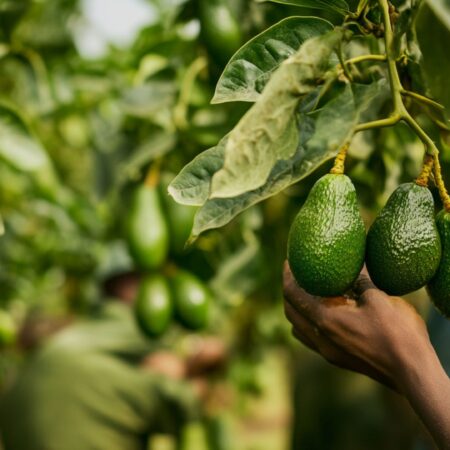
Gum arabic, also known as acacia gum, is a natural gum made of the hardened sap of various species of the Acacia tree, predominantly Acacia senegal and Acacia seyal. This remarkable substance has been used for centuries and remains a vital ingredient in a wide range of industries today. Kenya, particularly its northern regions, is one of the key global producers of high-quality gum arabic. This blog will delve into the benefits and diverse uses of Gum Arabic, highlighting its significance and the role Kenya plays in its production.
What is Gum Arabic?
Gum Arabic is a complex mixture of glycoproteins and polysaccharides that forms naturally on the bark of acacia trees, particularly in arid regions of Africa. This natural exudate is harvested by making incisions in the bark of the tree, from which the gum slowly seeps out, hardens, and is then collected by local communities.
The unique properties of Gum Arabic—its solubility in water, viscosity, and emulsification abilities—make it a highly sought-after ingredient in various applications, from food and beverages to pharmaceuticals and cosmetics.
The Benefits of Gum Arabic
- Natural Emulsifier
- Stabilizing Food and Beverages: Gum Arabic is widely used in the food industry as a natural emulsifier. It helps stabilize mixtures of oil and water, preventing them from separating. This is particularly valuable in products like soft drinks, where gum Arabic ensures that flavoring oils remain evenly distributed.
- Improved Texture: Beyond emulsification, gum arabic is valued for its ability to improve the texture of various food products. It is used in candies, baked goods, and ice creams to provide a smooth and consistent texture, enhancing the overall eating experience.
- Dietary Fiber
- Promotes Digestive Health: Gum Arabic is rich in soluble dietary fiber, which has numerous health benefits. It aids in digestion by promoting the growth of beneficial gut bacteria, which in turn supports a healthy digestive system. Regular consumption of Gum Arabic can help maintain bowel regularity and prevent digestive issues like constipation.
- Low-Calorie Sweetener: As a source of dietary fiber, Gum Arabic is also used in low-calorie and sugar-free products. It can act as a bulking agent, providing the desired texture and mouthfeel in reduced-sugar foods without adding significant calories.
- Prebiotic Properties
- Supports Gut Health: Gum Arabic’s prebiotic properties are particularly beneficial for gut health. It serves as a food source for the good bacteria in the gut, helping to maintain a healthy balance of gut flora. This can lead to improved overall health, including better immune function and reduced inflammation.
- Hypoallergenic and Natural
- Safe for Sensitive Individuals: One of the key benefits of Gum Arabic is that it is hypoallergenic and generally well-tolerated by individuals with food sensitivities. As a natural product, it is free from synthetic additives and preservatives, making it a safe choice for a wide range of applications.
- Sustainable and Eco-Friendly: Gum Arabic is harvested sustainably from acacia trees, often by local communities in arid regions. This not only helps protect the environment by promoting biodiversity but also supports the livelihoods of those involved in its collection.
The Diverse Uses of Gum Arabic
- Food and Beverage Industry
- Confectionery: Gum Arabic is a key ingredient in the production of many candies and sweets, particularly in the making of gummy candies, marshmallows, and chewy sweets. It provides the desired texture and acts as a stabilizer to keep ingredients like sugar and flavorings uniformly mixed.
- Soft Drinks and Juices: In the beverage industry, Gum Arabic is commonly used to stabilize flavors and prevent the separation of ingredients. It is particularly popular in the production of soft drinks and fruit juices, where it ensures that the product remains homogenous and visually appealing.
- Pharmaceuticals
- Tablets and Pills: In the pharmaceutical industry, Gum Arabic is used as a binder in tablets and pills. It helps to hold the ingredients together and ensures that the medication is released in a controlled manner in the body.
- Cough Syrups and Lozenges: Gum Arabic is also used in cough syrups and lozenges for its soothing properties. It helps to coat the throat and alleviate irritation, providing relief from coughs and sore throats.
- Cosmetics
- Skin Care Products: Gum Arabic is increasingly being used in the cosmetics industry as a natural thickener and emulsifier. It is found in lotions, creams, and serums, where it helps to stabilize formulations and enhance the texture of the product.
- Makeup: In makeup products, such as foundations and eyeliners, Gum Arabic is used to improve the product’s consistency and ensure that it applies smoothly to the skin.
- Printing and Arts
- Ink Production: Gum Arabic is an essential ingredient in traditional and modern ink formulations. It acts as a binder that holds pigment particles together and ensures a smooth flow of ink, whether used in printing or in art.
- Watercolor Painting: In the art world, Gum Arabic is used in watercolor painting to enhance the brilliance and luminosity of the colors. It also helps in controlling the spread of the paint on the paper, allowing artists to create precise and vibrant works.
Kenya’s Role in the Gum Arabic Market
Kenya, particularly the northern regions like North Eastern Kenya, plays a crucial role in the global Gum Arabic market. The country’s arid and semi-arid regions provide an ideal environment for the growth of Acacia senegal and Acacia seyal trees, which are the primary sources of high-quality Gum Arabic.
Kenyan Gum Arabic is prized for its purity and superior quality, making it a preferred choice for many industries worldwide. The harvesting of Gum Arabic in Kenya is often carried out by local communities, who have honed their techniques over generations. This not only ensures a consistent supply of Gum Arabic but also provides vital income for these communities, supporting sustainable development and improving livelihoods.
Conclusion: A Versatile and Valuable Natural Resource
Gum Arabic is a truly versatile natural ingredient with a wide range of benefits and uses. From improving the texture of food products to supporting gut health and enhancing the quality of cosmetics, this remarkable substance plays an integral role in many industries. Kenya’s contribution to the global Gum Arabic market is significant, providing high-quality gum arabic that meets the demands of consumers worldwide.
As the demand for natural and sustainable ingredients continues to grow, Gum Arabic is likely to play an even more important role in the future. Whether you’re a food manufacturer, a pharmaceutical company, or an artist, the benefits and uses of Gum Arabic make it a valuable resource that is well worth exploring.



